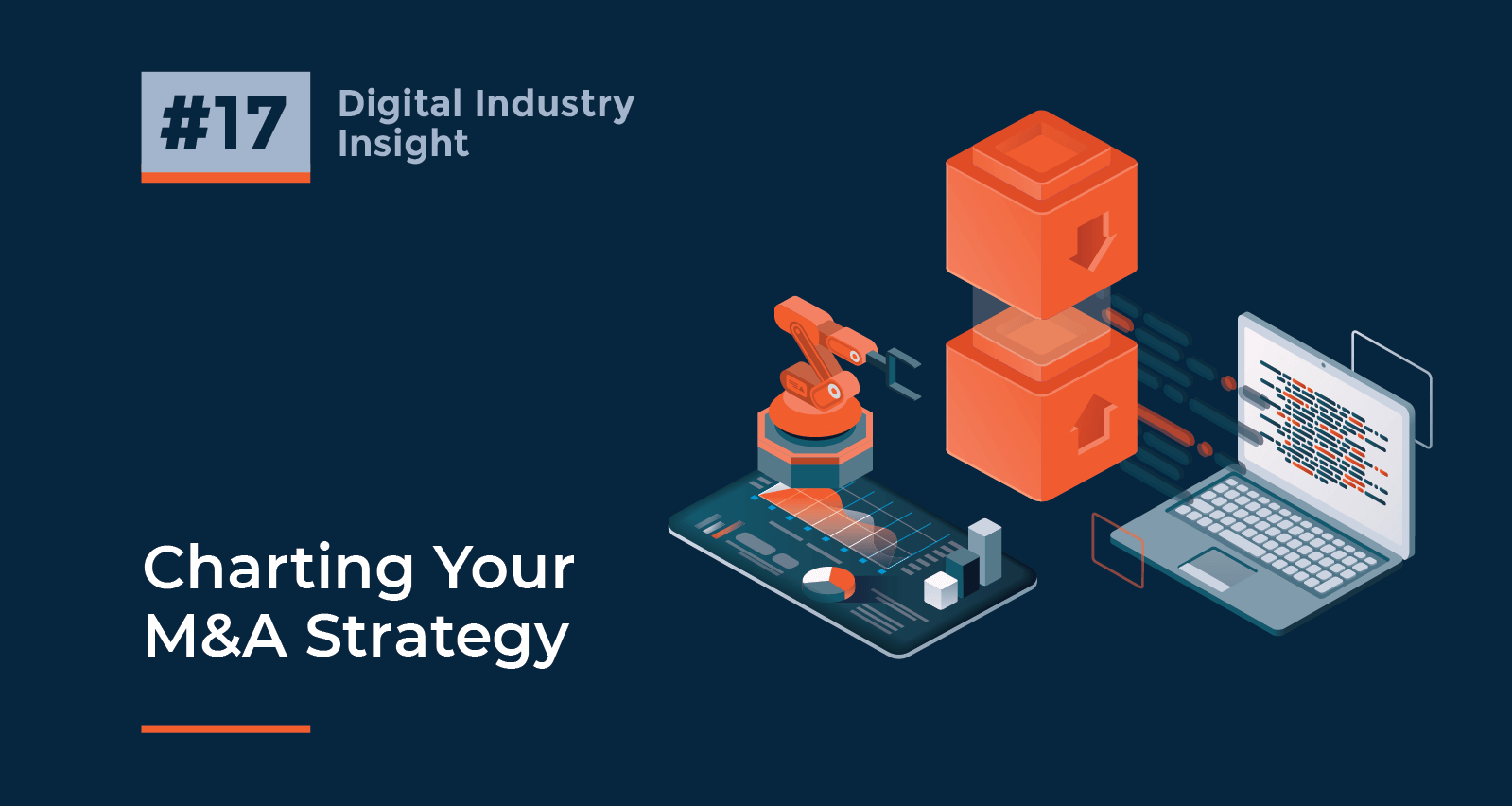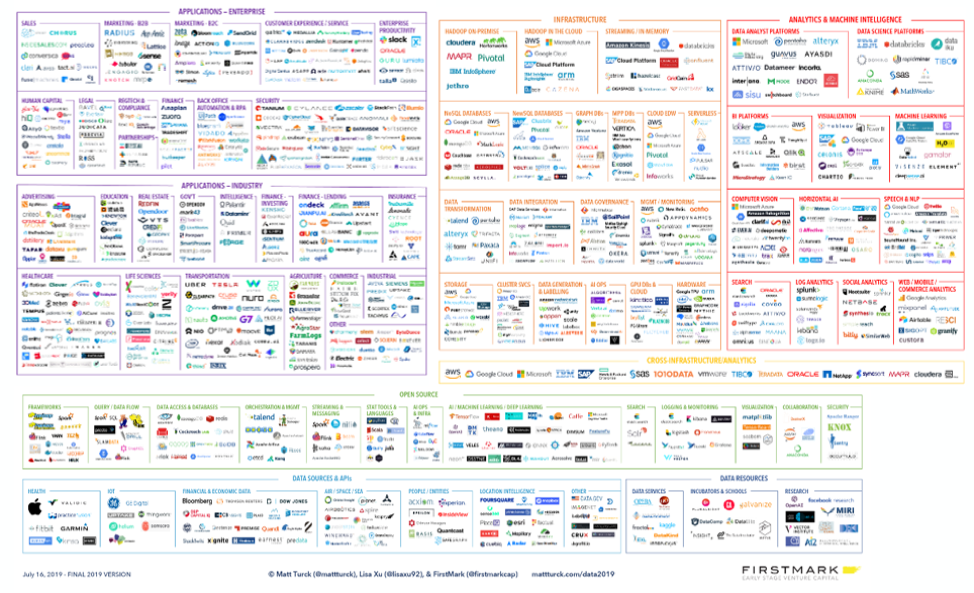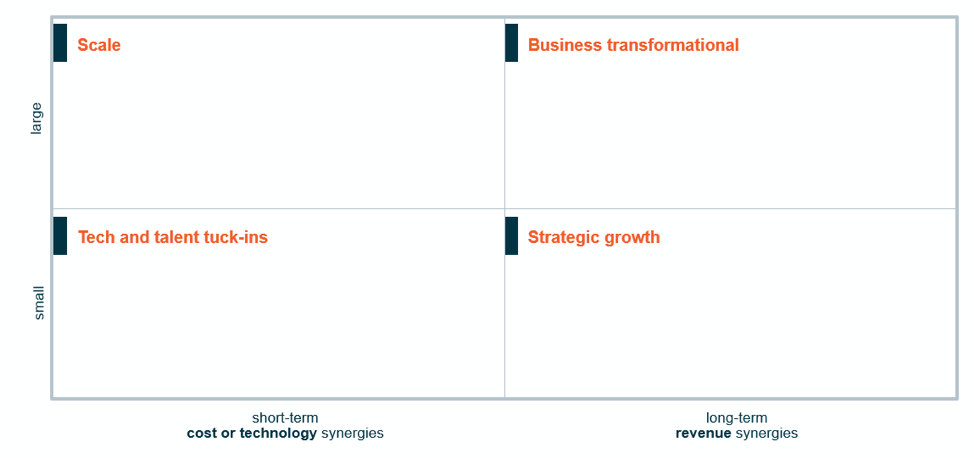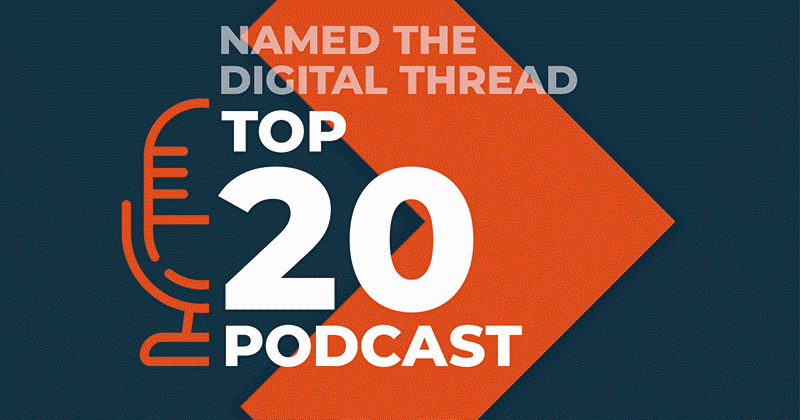Digital Industry Insight #17
Charting Your M&A Strategy
Doug Harp

Making the financial case for an acquisition
Despite the many examples of digital disruption and the maturing of the technology industry, we are still in the early stages of Digital Business adoption by the broader economy. According to a recent survey of 1,500 C-Suite executives by McKinsey published in Harvard Business Review, just 15% of firms have fully embedded digital technologies in more than half of all their businesses. 2/3 of firms surveyed generate just 10-15% of revenue through digital, while around 20% of companies are barely leveraging digital technologies at all. The recent McKinsey survey also quantifies the line and bottom line benefits of digital reinvention, which provide incremental sales growth and drive margin leverage as well. Companies that pursue strategies for the M&A case framework to embrace digital business increase revenue growth by an estimated 0.9% and add 1.8% to EBITDA growth annually on average compared with peers. So with digital business, an imperative for companies that want to deliver growth – and value to their stakeholders – but don’t have the time or internal resources, M&A becomes a compelling option.
How to chart the right M&A strategy
Say your company wants to expand a traditional industrial business by adding data analytics, perhaps an analytics as a service offering? Where to start? The array of potential targets can be overwhelming, and chances of success from picking a logo off a market landscape will be minimal to say the least. Markets today are complex and dynamic – see the data and analytics landscapes below:

It comes down to strategy - and identifying the value drivers
M&A is just one albeit powerful tool in realizing a Digital Business strategy. It’s as easy as just buying a logo – and the processes of choosing the right fit are even harder in Digital Industries because of the highly vertical nature of the businesses. To create a viable strategy, leaders need to identify the key value drivers for their industry, then stick to those drivers through the sourcing, execution, integration and follow-up of an acquisition to ensure success in the M&A case framework.
A framework for evaluating M&A options
A business will first need to identify the key role that they are looking for an acquisition to fill. There are four broad types of acquisitions – scale, business transformational, tech and talent tuck-ins, and strategic growth.
- Scale – Acquisitions of scale are about gaining market share and harnessing operational efficiencies. This type of deal can be either based on market consolidation or vertical integration (acquiring a distributor or supplier for instance). Scale acquisitions involve companies in the same industry, often direct competitors, but also based in different regions. The rationale for these types of acquisitions is often obvious and easily communicated; success depends on effective integration and execution. A good example of an acquisition of scale would be United Airlines buying Continental Airlines, and Oracle buying Peoplesoft and Siebel.
- Business Transformational – This strategy is the most ambitious, particularly if it is premised on pivoting a company into a completely new industry or business model. Transformational acquisitions are the most risky, but can have a big payoff. An example of a transformational acquisition is PTC buying ThingWorx (a PLM/CAD vendor buying an IIOT SaaS platform).
- Tech and Talent Tuck-ins – Small talent “acqui-hires” or technology acquisitions are the easiest and least risky type of acquisition. The smaller the acquisition target compared to the acquirer, the easier the integration and the less downside risk. Major acquirers like IBM and Microsoft specialize in the small tuck-in deal, typically so small that the price is not publicly disclosed.
- Strategic Growth – These acquisitions are most successful when used to extend a core business into an adjacency, expand the addressable market and increase value to customers with a larger product portfolio. Examples of strategic growth acquisitions include Salesforce’s acquisitions of ExactTarget, Microsoft’s acquisition of LinkedIn, SAP’s acquisitions of SuccessFactors and Ariba and others. Typically the target will already be operating at significant scale, and with the differences in selling product in adjacent markets, the planning for sales force integration needs to be thoughtful – and flexible.

How to define a strategy that makes sense?
Organizations need a coherent strategy that fits the stage of the market, the capabilities of the company and the cultures if the industry. For industrial markets, this requires a nuanced understanding of the different sub-sectors in an industry. For instance, in manufacturing, it’s critical to understand the distinctions between process versus discrete versus batch manufacturing. The key goal needs to be the sustainable creation of value drivers, and the realization that creating value through M&A is far more complex than simple logos on a page. The challenge for leaders in any industry, no matter how complex, is to define a strategy that’s simply articulated, flexible enough to adapt through change, and durable enough to drive growth over the long term.
What more information on how to define and implement your M&A strategy? Join us for our webinar on Thursday, May 14th as our panel of experts brings some clarity to the chaos.

Momenta Partners encompasses leading Strategic Advisory, Talent, and Venture practices. We’re the guiding hand behind leading industrials’ IoT strategies, over 200+ IoT leadership placements, and 40+ young IoT disruptors. Schedule a free consultation to learn more about our Digital Industry practice.





